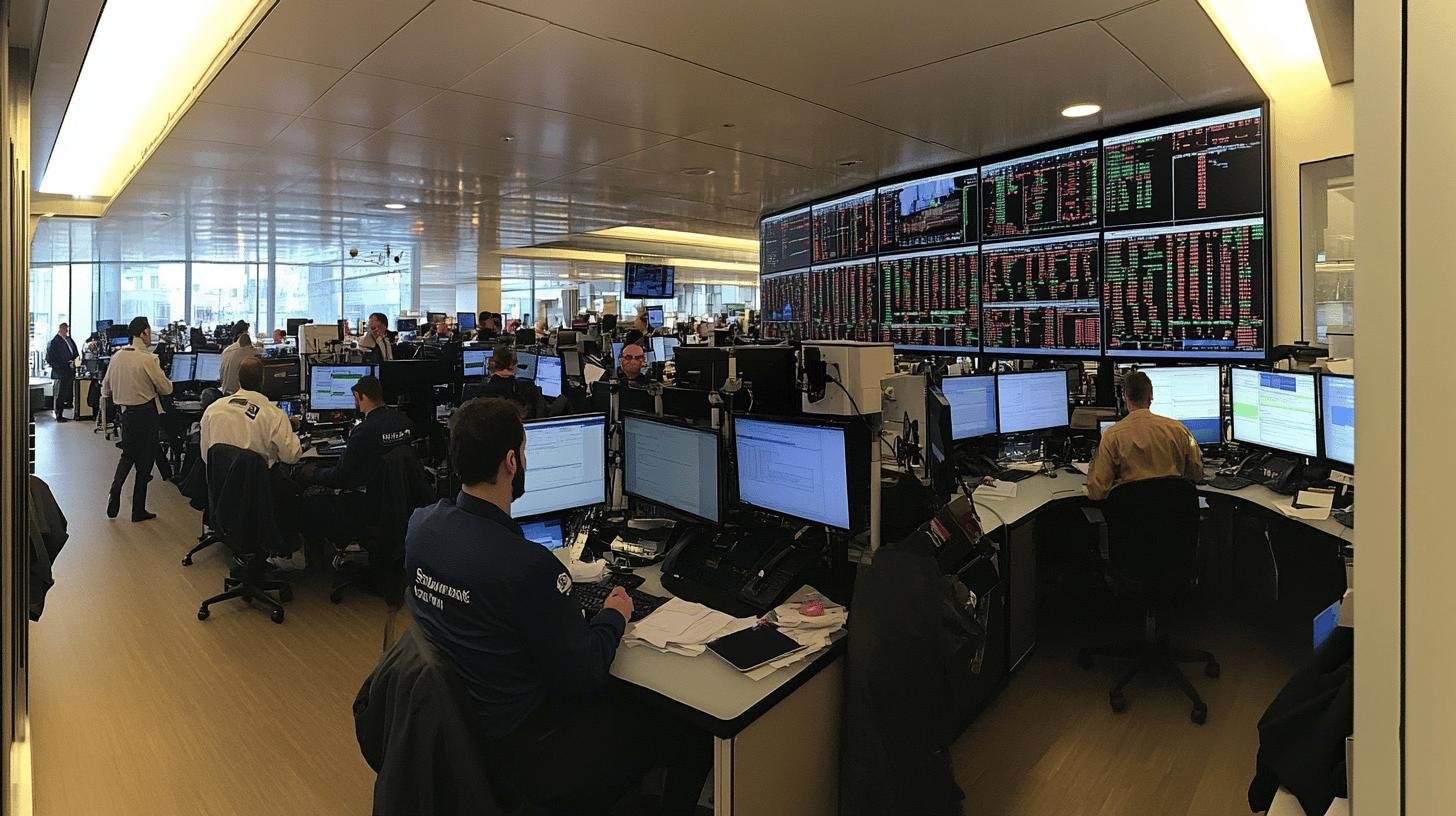TL;DR:
- Laissez-faire economics: Minimal government intervention in business; promotes free markets and entrepreneurship.
- Origin: 18th century Enlightenment, influenced by Adam Smith’s work “The Wealth of Nations.”
- Key principles: Free competition, self-regulating markets, voluntary exchange, property rights protection, limited government involvement.
- Real-world applications: Deregulation, tax reductions, privatization; examples include the 19th-century U.S., Hong Kong, Reaganomics, and Thatcher’s UK.
- Pros: Fosters innovation, efficiency, variety of products, economic growth.
- Cons: Market failures, income inequality, worker exploitation, consumer protection issues, environmental impacts.
- Modern debates: Balance between economic freedom and necessary oversight to prevent market failures and protect public interests.
Is a hands-off government really the best choice for the economy? Laissez-faire economics suggests just that, arguing economies work best with minimal interference. This idea, rooted in a French phrase meaning “let it be,” emphasizes free markets and personal entrepreneurship. Critics debate its impact, citing concerns over market fairness and inequality. Still, many hold fast to its promise of economic freedom and innovation. Curious about the fine line between freedom and regulation in economics? Dive into the laissez-faire approach; it might just surprise you.
Understanding Laissez-Faire Economics
Laissez-faire economics means minimal government intervention in business affairs. It supports free markets and individual entrepreneurship, believing that economies work best when independent. The term “laissez-faire” comes from French, meaning “let do” or “let it be.” This captures the idea of allowing businesses to operate without unnecessary regulations.
Key principles of laissez-faire economics include:
- Free Competition: Encourages a market where businesses compete without government barriers.
- Self-Regulating Markets: Trusts that supply and demand adjust naturally to maintain balance.
- Voluntary Exchange: Focuses on mutually beneficial transactions.
- Protection of Property Rights: Ensures secure asset ownership to boost investment.
- Limited Government Involvement: Restricts the government to maintaining order and protecting property rights, not controlling market dynamics.
The allure of laissez-faire economics is its promotion of freedom and entrepreneurship. It reduces government intervention, sparking innovation and allowing individuals to pursue their interests. Supporters argue this approach can lead to economic growth as businesses freely explore opportunities and respond to market demands.
Historical Context and Origins of Laissez-Faire

Where did laissez-faire economics originate?
It began in the 18th century during the Enlightenment, marked by intellectual advancements in reason, science, and individualism. Adam Smith, a Scottish economist, was pivotal in developing this approach. He believed that free markets, guided by the “invisible hand,” naturally lead to efficiency without government intervention. His work, “The Wealth of Nations,” remains influential in discussions of laissez-faire today.
Laissez-Faire in the Industrial Revolution
How did laissez-faire economics impact the Industrial Revolution?
In the 19th century, laissez-faire policies fueled industrialization in the U.S. and U.K. These principles allowed rapid growth as businesses thrived with minimal oversight. This setting encouraged innovation and competition, crucial for new technologies and industries. Without restrictive regulations, entrepreneurs had the freedom to experiment and expand, leading to increased productivity and economic expansion.
| Year | Event | Figure |
|---|---|---|
| 1776 | Publication of “The Wealth of Nations” | Adam Smith |
| 1800s | Industrial Revolution | Various Entrepreneurs |
| 1848 | Peak of laissez-faire influence | British Economists |
| 1870 | Second Industrial Revolution begins | American Innovators |
While beneficial, this approach led to challenges like worker exploitation and environmental issues. However, the economic growth and industrial achievements highlight its significant impact on shaping modern economies.
Principles and Characteristics of Laissez-Faire Economics
What are the core principles of laissez-faire economics?
These principles focus on self-regulating markets, where supply and demand naturally maintain balance. Competition is vital, driving businesses to innovate to thrive. The government’s role is limited to protecting property rights and keeping order, steering clear of controlling market dynamics. It encourages voluntary exchanges and entrepreneurship, benefiting all parties involved.
| Principle | Description |
|---|---|
| Self-Regulating Markets | Markets naturally adjust to supply and demand. |
| Competition | Encourages efficiency and innovation. |
| Property Rights | Secure ownership fosters investment and confidence. |
| Limited Government | Maintains order, avoiding market control. |
How do these principles shape a laissez-faire economy?
Minimal government intervention defines a laissez-faire economy, letting the market decide outcomes. Focusing on freedom and entrepreneurship, it thrives on supply and demand’s natural order. Protecting property rights and encouraging competition sustain this dynamic system, resulting in a self-sustaining marketplace.
Laissez-Faire Economics in Practice

How is laissez-faire economics applied in the real world?
It applies through policies like deregulation, tax reduction, and privatization. These aim to minimize government interference, allowing businesses more freedom. With fewer constraints, industries can innovate and expand without heavy oversight. Tax cuts increase disposable income for individuals and businesses, boosting spending and investment. Privatization shifts control to private hands, enhancing competition.
- United States in the 19th century: Minimal interference fostered rapid growth during industrialization.
- Hong Kong’s economic model: Known for low taxes and free trade with little regulation.
- Reaganomics in the 1980s: Focused on tax cuts and deregulation to stimulate growth.
- Margaret Thatcher’s UK policies: Reduced state control, leading to privatization and deregulation.
- Singapore’s open economy: Combines low taxes with free-market policies, achieving economic success.
What are the outcomes and implications of these examples?
Laissez-faire policies have led to varied outcomes. In the U.S. 19th century and Hong Kong, these policies spurred economic growth by promoting competition and innovation. Reaganomics and Thatcher’s policies revitalized economies with tax cuts and deregulation. However, they also caused issues like income inequality and potential under-regulation. Balancing freedom and accountability is vital in addressing these challenges.
Laissez-Faire Economics: Pros and Cons
What are the benefits of laissez-faire economics?
It offers numerous advantages, mainly in fostering innovation and growth. By minimizing government interference, businesses can explore new ideas, driving advancements and efficiency. This competitive environment often results in lower prices and diverse products for consumers, contributing to overall economic growth.
What are the drawbacks of laissez-faire economics?
- Market Failures: Lack of regulation can lead to inefficiencies and economic crises.
- Income Inequality: Without intervention, wealth gaps may widen, ignoring social equity.
- Worker Exploitation: Absence of labor protections can lead to poor conditions and wages.
- Consumer Protection: Without oversight, consumers may face unsafe products and fraud.
- Environmental Impact: Profits might be prioritized over sustainability.
How do these pros and cons impact society?
While fostering growth and innovation, laissez-faire economics can cause social and economic challenges. It may lead to impressive advancements but also exacerbate inequality and ignore worker and consumer welfare. Careful consideration of government intervention is needed to ensure innovation doesn’t undermine social justice or environmental health.
The Influence of Laissez-Faire on Modern Economic Policies

How are laissez-faire principles applied in modern economies?
Though rare today, these principles still influence policy debates, often about reducing regulation, lowering taxes, and deciding government roles in the economy. The aim is to balance economic freedom with necessary oversight, allowing efficient markets while safeguarding public interests.
- United States tax cuts: Stimulate growth by reducing tax rates for corporations and individuals.
- Hong Kong’s free-market practices: Maintains low taxes and minimal trade restrictions.
- Singapore’s regulatory approach: Combines free-market policies with strategic government investments.
- United Kingdom’s deregulation: Streamlines regulations to boost competitiveness, especially in finance.
- Australia’s privatization: Moves to privatize state enterprises for efficiency and better service.
What are the ongoing debates about the role of government in the economy?
Debates continue on how much the government should intervene. Supporters of laissez-faire argue for minimal interference to encourage innovation and efficiency. Critics contend that regulation is necessary to prevent market failures and protect consumers. These discussions are central to policy-making as governments seek frameworks promoting growth without sacrificing social equity and sustainability.
Final Words
Exploring “What is Laissez-Faire Economics?” reveals a theory centered on minimal government interference, allowing markets to self-regulate. From its Enlightenment origins to its role in the Industrial Revolution, laissez-faire has shaped economic landscapes. Key principles like competition and limited government highlight its core beliefs.
Laissez-faire in practice includes deregulation and tax reduction, showing both triumphs and trade-offs.
While it fuels innovation, it also poses risks like market failures. Modern policies still echo laissez-faire ideas, sparking debates on economic governance. Understanding these dynamics encourages informed decision-making.
FAQ
What is laissez-faire capitalism?
Laissez-faire capitalism refers to an economic system with minimal government intervention, allowing markets to operate freely. This promotes individual entrepreneurship and self-regulating markets.
What does “laissez-faire” mean?
The term “laissez-faire” is French for “let do” or “let it be,” suggesting that economies work best without government interference.
Who introduced the concept of laissez-faire?
The concept can be traced back to Enlightenment thinkers like Adam Smith in the 18th century, advocating for limited governmental roles in economic matters.
What are some examples of laissez-faire economics?
Examples include deregulating industries, reducing taxes, and privatizing state enterprises to promote free market activities.
How did Adam Smith influence laissez-faire ideology?
Adam Smith championed free markets and limited government roles, laying intellectual foundations for laissez-faire policies during the Enlightenment.
What is a laissez-faire economy in simple terms?
It’s an economy where the government minimally interferes, letting market forces like supply and demand dictate economic proceedings.
What defines laissez-faire leadership?
Laissez-faire leadership involves minimal supervision, empowering individuals to make decisions, akin to its economic principle of self-regulation.
Which statement best describes laissez-faire economics?
Laissez-faire economics is best described as a system advocating for minimal government involvement in economic activities, promoting free markets.
What is an example of a laissez-faire policy?
A laissez-faire policy example is the deregulation of an industry, removing government controls to enhance market competitiveness.

